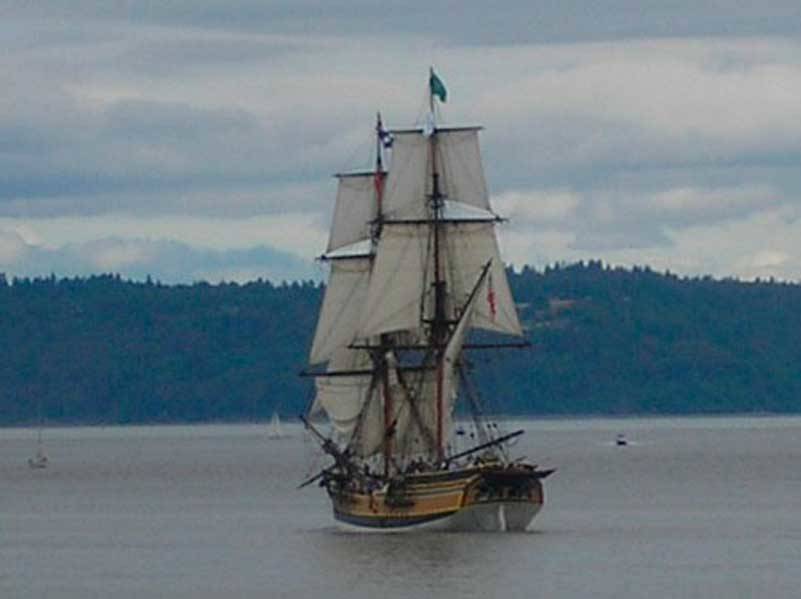By Morf Morford
Tacoma Daily Index
You can always count on one thing about human beings – we love our favorite things – until we don’t.
From music to clothes to technology, we love the things we love with an undying passion – until we suddenly don’t.
As a culture, we almost universally adore innovators, inventors and entrepreneurs – and then, like some musical one-hit wonders from some distant era of pop music, we forget about them, or even deny that we ever cared about them.
Innovation comes in two flavors – one that builds on or complements what came before.
These add-ons, accessories and updated versions are what sustains or buttresses an existing product, market or value network.
These are variations or improvements on an existing technology or theme.
This particular adaptation or tweak might be unfamiliar or even unexpected, but, since it is associated with something we already know, it is not quite so intimidating.
The second flavor of innovation is disruptive.
This would be the category of development that displaces the previous technology.
Throughout human history we have seen very few of these technologies – maybe one per century or so.
The Industrial Revolution (late 1790s) was a time, for example, when machines, for the most part, displaced human skill and labor.
Before that era, virtually every necessity, from shoes to food, were made, grown or improvised from home. Very little cash changed hands and few people shopped or travelled.
After that time, virtually every item was produced by machines at a factory and sold at stores.
A century or so later, automobiles were produced which replaced animals as a primary means of transportation.
Horses (and bicycles) became more recreational than essential means of transport.
In both cases, entire economies and industries were upended.
Unintended and entirely unexpected developments followed.
As a result of massive, centralized factories, cities become cores of power and commerce.
Cities held jobs and rural areas became depopulated and impoverished.
With the advent of automobiles, commuting became a possibility – and with commuting came suburbs and freeways.
Most of us operate under the assumption that cars and urban centers have always been – and will always be – with us.
But they haven’t – and they won’t.
Fast-forward to 2020 and its aftermath.
Urban cores are not what they were just a year or so ago.
The number of us who commute has dropped dramatically.
Working from home has become a possibility for many. A requirement for some.
I see bicycles every day now. And many are used for essential uses, grocery shopping or commuting to work for example, not just for recreation.
More and more cities are expanding or re-inventing inter-urban rail systems.
The automobile may not be displaced, but it is not the single dominant mode of transportation it once was.
Cars, in the eyes of many urban planners, are currently seen as one strand (among many) of an emerging, multi-varied mobile urban landscape.
Cars may be with us for decades to come, but their dominance over every aspect of travel, housing and urban design is evaporating day by day.
As our reliance on cars diminishes, so does our dependence on cities.
Working from home, even on an occasional basis, changes everything from commuting patterns to housing requirements.
An entire set of assumptions about work, food, school and housing is changing before our eyes.
As I mentioned, we’ve seen this pattern before.
As changes progress, we have winners and losers; some riding the waves of change and prosperity while others are stranded and left behind.
Jobs, occupations, career tracks, even entire industries are abandoned.
Inconceivable fortunes are accumulated.
There’s a standard formula to all this; first we have the introduction of the disruptive technology, next we have the “early adopters” and third, the inevitable objectors – and a divided response between those who want to protect and preserve the old ways (the “way it’s always been” they might say – even though it was never “always” in existence) and those seeing, and seizing, a once in a lifetime opportunity.
And then, finally, we have the new technology establishing dominance and setting its own standards.
But never for long.
Just a few examples of the replacement/displacement cycle are the near evaporation of physical media (books, CDs and DVDs) and the stores that sold them, thanks to music streaming, the decline of movie theaters also as a result of Netflix and video streaming, the disappearance of telephone landlines thanks to smart phones, and even the erasure of previous phone technology (like Blackberry and flip-phones) thanks to iPhones.
The internet as a whole has changed the landscape of work, school, healthcare, meetings, conferences, travel and home entertainment – to name a few.
Even within the virtual reality of the internet, those platforms which once dazzled us are already receding out of sight – when was the last time, for example, that you got an e-mail that mattered to you?
Mix in what might be called corollaries, those internet enabled technologies from Uber to blockchain to ransom ware to cyber currencies and you have a whole new world baffling, if not incomprehensible, to those natives of a vastly simpler world – like the 1990s for instance.
Thanks to Uber, car ownership will never be the same. And thanks to Tesla, cars themselves will never be the same.
Car driving – and ownership – will soon be, like horse ownership, a pursuit of hobbyists and a sign of leisure and recreation instead of the central, if not essential, set of obligations we consider them now.
Innovations keep us in motion. Some make us crazy, some are fun, and some are in response to a crisis we may have never imagined
Love it or hate it, innovation is with us and has made us who we are.





